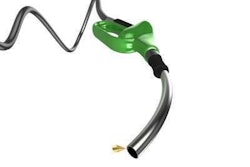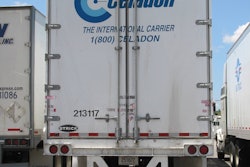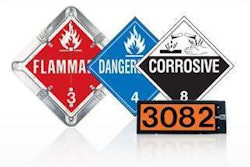
An American Trucking Associations representative told carrier executives that upcoming Comprehensive Safety Analysis 2010 rules will rely on inconsistent state accident reporting and that carrier safety performance scores will be based on a flawed formula.
Rob Abbott, ATA vice president of safety policy, made his remarks to carrier executives gathered this past weekend for the 2010 Pegasus TransTech Users Conference at the Marriott Sand Key hotel in Clearwater Beach, Fla. Pegasus TransTech provides Transflo, Transflo Express and other technologies that speed the billing cycle and help carriers go paperless.
At the same conference, Cynthia B. Witty, safety investigator for the Federal Motor Carrier Safety Administration, said that enforcement under the new rules would stress compliance with hours-of-service. If a carrier is found to have numerous HOS violations, “I’ll be coming in for an audit,” she said. Witty also noted that current out-of-service criteria at roadside inspections will remain substantially unchanged with CSA 2010.
Abbott said the ATA generally supports CSA2010 but finds fault with some of its features. He said CSA 2010 safety scores will be based on reports from FMCSA inspectors, state agencies and sometimes from regional authorities, but that only those agencies that participate in the federally funded Motor Carrier Safety Assistance Program will report violations, and most law enforcement below the state level is not part of MCSAP. That means accidents in some states are far less likely to be reported to FMCSA than in others, resulting in uneven enforcement under CSA 2010. “Carriers with operations in high reporting states may find it harder to maintain good CSA 2010 scores than those who operate in states where reporting is low,” Abbott said.
According to Abbott’s presentation, states that most consistently report truck accidents to FMCSA are Indiana, Kansas, Missouri and New Jersey; those four states report between 80 percent and 90 percent of truck crashes. The lowest proportion of reporting comes from Florida and New Mexico, which report fewer than 30 percent of such incidents, and Mississippi, which reports between 30 percent and 40 percent. The same information shows that variations exist among other major trucking states, such as California at 50 percent to 60 percent, Ohio at 40 percent to 50 percent, Pennsylvania at 70 percent to 79 percent, and Texas at 60 percent to 70 percent.
Abbott also said the formula for arriving at a CSA 2010 safety score is flawed. At its most basic, he explained, the formula divides the number of carrier violations by the number of U.S. Department of Transportation-registered trucks in the fleet – without regard to miles actually driven. “That can hurt efficient carriers with high equipment utilization because they travel more miles and do more work with fewer trucks,” Abbott said. Conceivably, Abbott said, a carrier could improve its safety score under CSA 2010 simply by adding trucks to the fleet.
State reporting data was gathered and published by the Transportation Research Institute at the University of Missouri.













